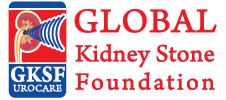Is lithotripsy (ESWL) painful?
You will be given an anesthetic so you will not feel any pain during the treatment. After the treatment, you may experience some pain or discomfort while you pass your fragments. Take your pain medication as prescribed by your doctor and try soaking in a warm tub. 6.
What Is Endoscopic Lithotripsy?
Many stones can be removed without conventional surgery by introducing small telescopes into the body either through normal urinary passage or through a pencil size hole in the skin (the percutaneous approach).
Can I have lithotripsy?
It is advised that lithotripsy not be directed towards or focused within 15cm (6 inches) of the stimulator. Surgery may be required to replace stimulators that are damaged during lithotripsy.
Where is Shock Wave lithotripsy Room?
The Lithotripsy suite is adjacent to “U” ward on the first floor near nuclear medicine department. We are able to offer the complete management of the stone treatment with Dernier compact Delta II machine.
What is Extra Corporel Sound Wave Lithotripsy (ESWL)?
Extra corporeal sound wave lithography or ESWL sound waves which are high energy, pressure waves are used to break the stones into small pieces, as small as grains of sand. The sound waves which are generated outside the body can break up urinary stones within the body. The stone fragments because of their small size, can pass out of the body along with the urine.
What is the minimum size of fragments obtained with the holmium laser during lithotripsy?
Very tiny pieces of stone can be removed during holmium laser lithotripsy. The debris in the irrigant giving the snowstorm effect with lithotripsy consists of stone “dust. ” By maximizing this effect, a large volume of stone can be removed without having major fragments to retrieve or to pass.
Is an Extra Corporial Shockwave Lithotripsy (ESWL) procedure considered invasive?
Yes, as noted under ‘Scope’ section of the New York State Surgical and Invasive Procedure Protocol (NYSSIPP).
Do small retained fragments of kidney stones after lithotripsy increase the risk of stone recurrence?
Leftover stone fragments do appear to grow faster the usual stone recurrence rate. So if a person is not stone-free after lithotripsy, new stones may form quicker than they would in an untreated person.
If I have an IDD pump, can I have lithotripsy?
Lithotripsy is a treatment that uses sound waves to break up stones in the kidney or gallbladder. It should not be used if you have an implanted pump. Lithotripsy can damage electrical circuits, causing the pump to stop functioning properly. This will require pump replacement and could also cause a loss of therapy or a clinically significant or fatal drug overdose.
Does some medication or treatment to destroy renal calculi alternative to the surgical intervention or the shock waves extracorporeal lithotripsy (SWEL) exist ?
For calcium calculi such as calcium oxalate (in monohydrate or dihydrate form), hydroxyapatite, brushite or mix, unfortunately there is no medication that dissolves them in vivo, inside the organism. However, in these cases it is important to discover the causes that have induced the calculus formation, in order to correct and to prevent the appearance of new episodes. Prevention depends on calculus type and on the urinary parameters altered.
What is the purpose of the ESWL (Extracoporeal Shock Wave Lithotripsy), and is it safe?
The purpose is to safely fragment your kidney or ureteral stones so the stone fragments can be passed naturally in your urine. The treatment is safe and complications of treatment are rare.
What happens after the treatment?
You will be sent to outpatient recovery for observation, and when the doctors feel you are ready to go home, you will be discharged.
How long will I be at the hospital and how long is extracorporeal lithotripsy (ESWL) treatment?
Plan on a six to seven hour stay from the time you arrival. The actual treatment will take around 40-90 minutes. The extra time is for you to be admitted, evaluated by the anesthesiologist and other physicians, and to recover.
